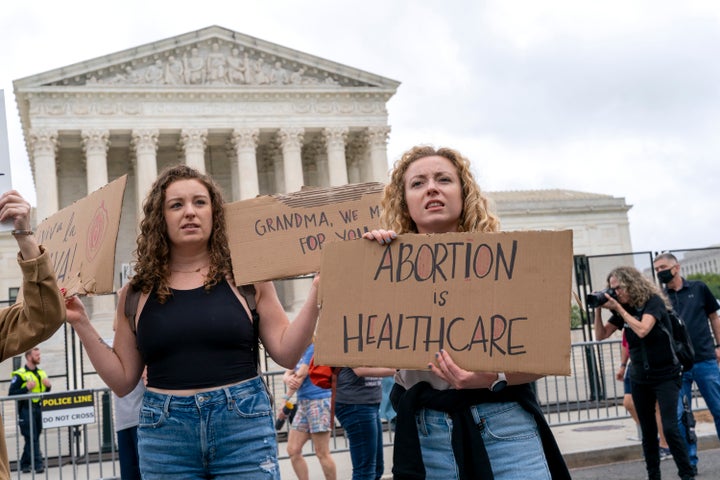The Supreme Court struck down Roe v. Wade on Friday, dismantling the half-century-old precedent that protected abortion rights and giving states the go-ahead to dramatically limit access to reproductive health care. Simultaneously, the court struck down Casey v. Planned Parenthood, a later case that affirmed Roe with some exceptions.
“The Constitution does not confer a right to abortion; Roe and Casey are overruled; and the authority to regulate abortion is returned to the people and their elected representatives,” the court stated.
The ruling in the Dobbs v. Jackson Women’s Health Organization case, written by Justice Samuel Alito, was not a surprise. A draft ruling was leaked to Politico and published in early May. Reports indicated at the time that fellow conservative justices Clarence Thomas, Brett Kavanaugh, Neil Gorsuch and Amy Coney Barrett also supported the decision, while Chief Justice John Roberts favored a narrower approach.
The hardline conservatives won out. Their ruling will now go nationwide: allowing states to implement strict abortion restrictions that will force some people to continue unwanted and unsafe pregnancies. Victims of rape and incest will, in some states, have to go through the traumas of pregnancy, birth, and parenthood or adoption. Babies will be born with health conditions they suffer from and even quickly die from. People who aren’t prepared or don’t want to have children will have to have them anyway.
The ruling does not end abortion rights entirely. Some states have vowed to protect abortion access, and will likely become a safe haven for those seeking the procedures who are able to afford to travel there. It’s unclear how quickly the 22 states that already have laws limiting abortion will put their bans into effect. And most state bans restrict abortion only after a certain point in a pregnancy, often with exceptions.
However, that’s not always the case. In Oklahoma, the GOP-controlled legislature passed a bill that would prohibit all abortions, except if the life of the pregnant person was in danger or a rape had been reported to law enforcement. In other states, Republicans are increasingly pushing abortion restrictions that offer no exceptions for victims of rape or incest.
And some efforts to enshrine abortion rights have failed. Senate Republicans blocked a bill to codify Roe v. Wade in May. The GOP holds an electoral advantage in many states due to district lines and electoral laws.

The Supreme Court is stacked with conservatives, most of whom were nominated by presidents who were elected even though they lost the popular vote. Former President Donald Trump, who won the presidency despite receiving fewer votes than his Democratic opponent, nominated Gorsuch, Kavanaugh and Barrett to the court; Gorsuch took a seat that opened under former President Barack Obama and was left unfilled for months, against the norm, by Republican senators.
The deck is stacked against supporters of abortion rights. However, many advocacy groups were already planning next steps in the event of Roe v. Wade being overturned.
One is to end the filibuster, a Senate rule that requires 60 votes for most legislation — allowing the minority party to block bills, even if most senators support them. For now, that’s unlikely: Two Senate Democrats, Joe Manchin of West Virginia and Kyrsten Sinema of Arizona, oppose ending the filibuster. Even if they did, Democrats likely only have 49 votes in favor of codifying Roe. In the most recent vote, Manchin sided with Republicans to block the bill.
Many groups are also mobilizing to support people seeking abortions by funding travel to and care in states where the procedure remains legal.
Another option is medication abortion, which allows some people seeking to end their pregnancies to do so at home. State-level abortion bans have also targeted medication abortion, but advocates say it’s likely more people will obtain the medication and manage their own abortions should bans go into effect.
